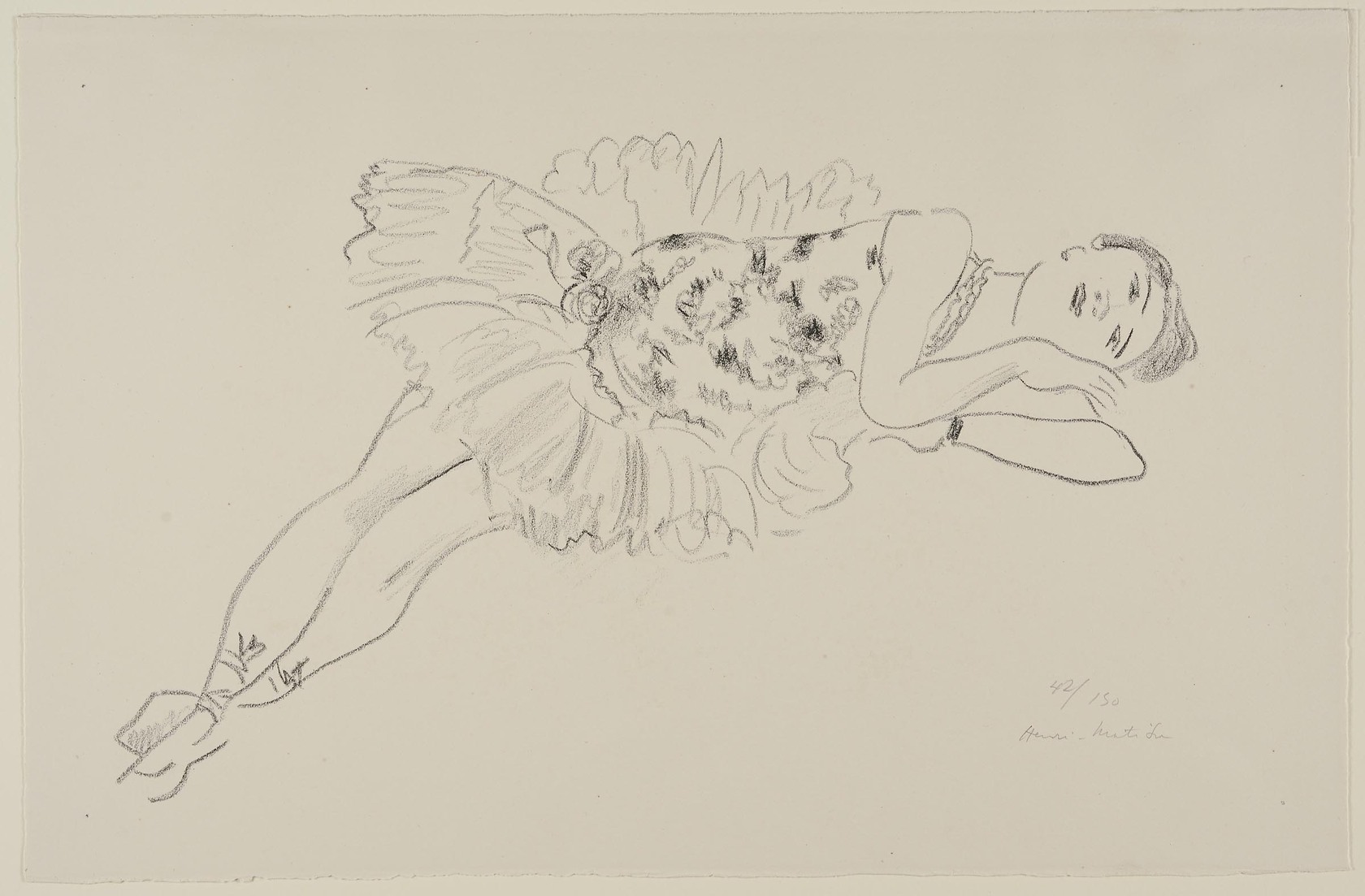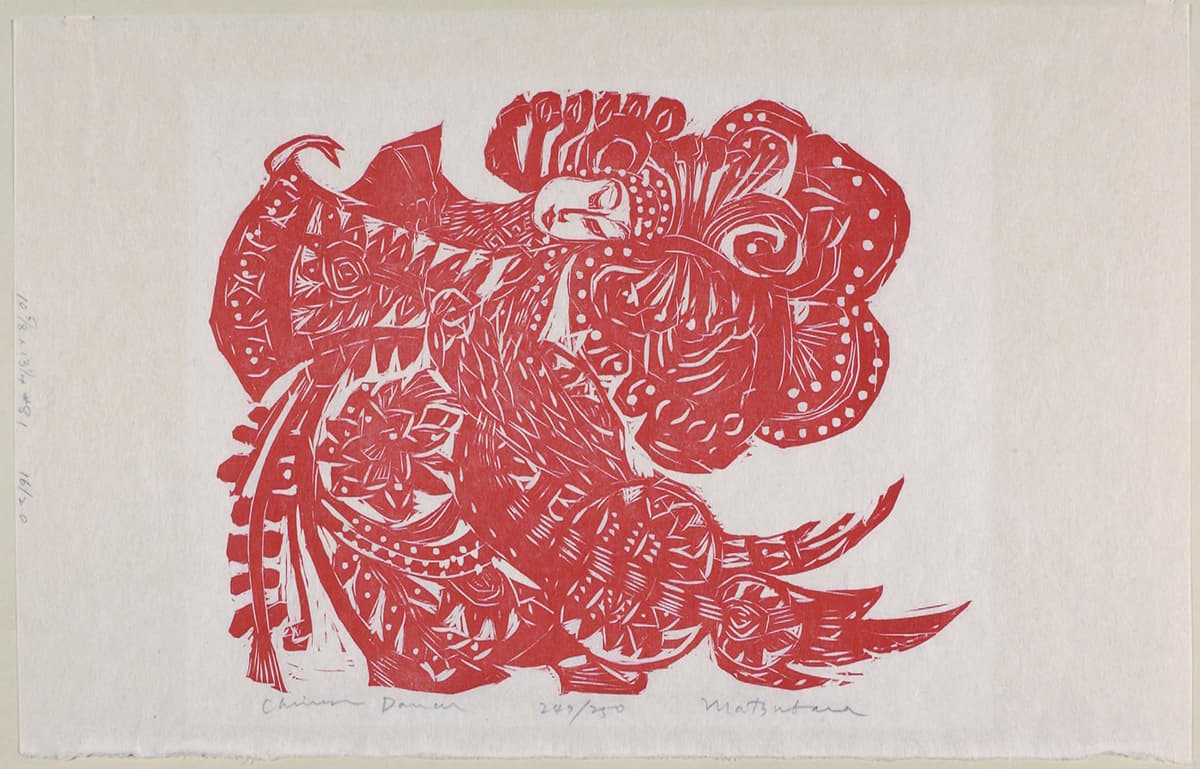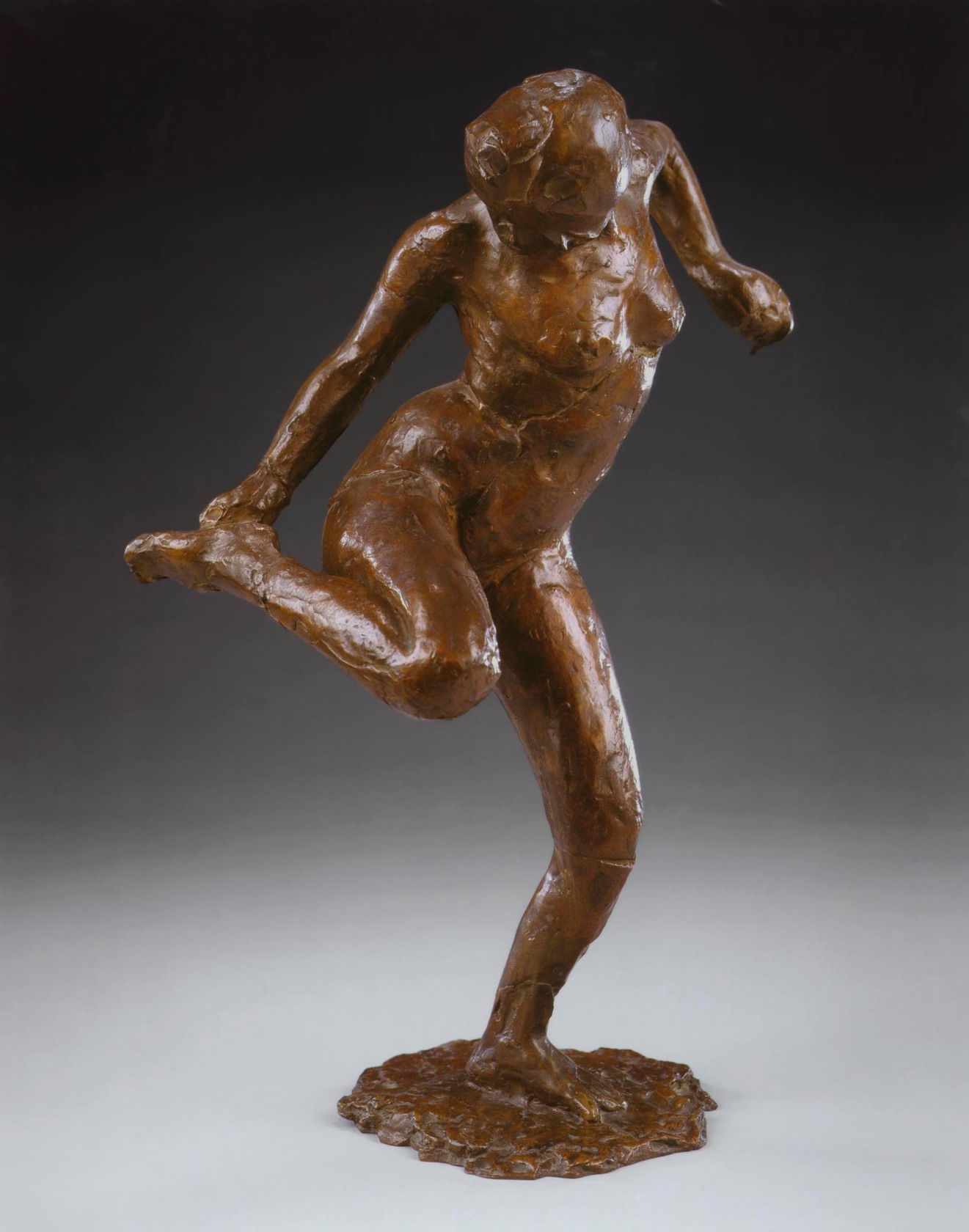Happy Tour Tuesday! We’re taking you through works in our collection that feature dancers, beginning with this work on paper by Edgar Degas.
Degas was a prolific painter and draftsman, and his ability to capture motion on the page lends itself beautifully well to a subject that makes up more than half of his works: dancers. While some of his paintings and drawings feature dancers on stage, Degas was particularly interested in portraying moments behind the scenes, such as groups of young students in classes or a ballerina practicing in rehearsal.

Celebrated for his striking approach to color and form, Henri Matisse was one of the most influential artists working in the early 20th century. This lithograph, a selection from a series of ten, was done in the late 1920s, a period when Matisse shifted from his bold compositions of Fauvism to a softer style you can see here.

This woodblock print is by artist Matsubara Naoko, who studied at the school of fine arts at Carnegie Mellon University. Though much of her work features the Japanese shrines and temples of her hometown of Kyoto, this piece portrays a traditional Chinese dancer, whose pointed toe and waving skirt offer a sense of movement and energy.
Woodblock prints are created by carving a pattern into the face of a printing block, which is then inked and pressed onto a page. This ancient technique has a significant artistic legacy in Japan, where it rose to prominence as an art form as well as a way to print books.

We’re closing our Tour Tuesday with another work by Degas! Although primarily known for his paintings and drawings, Degas experimented with sculpture throughout the later part of his career. These works offer another window into Degas’s fascination with bodies in motion.
Most of his wax sculptures were not shown during his life, and remained in storage until after he died in 1917, when his heirs decided to cast them in bronze to preserve them. This sculpture (the only one by Degas in our collection) was cast sometime before 1932.
